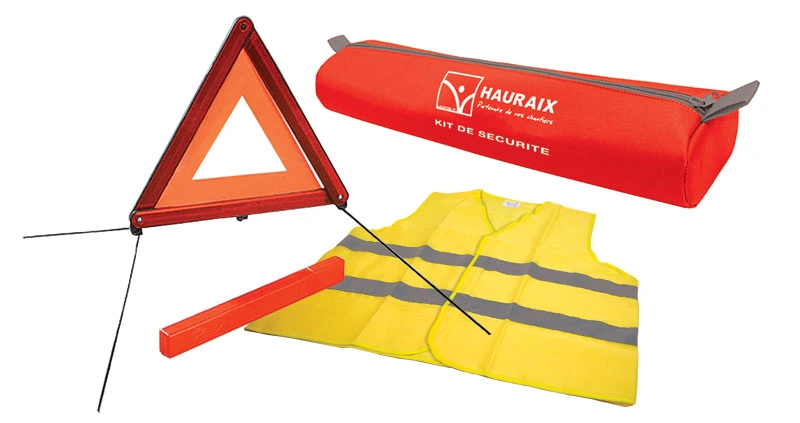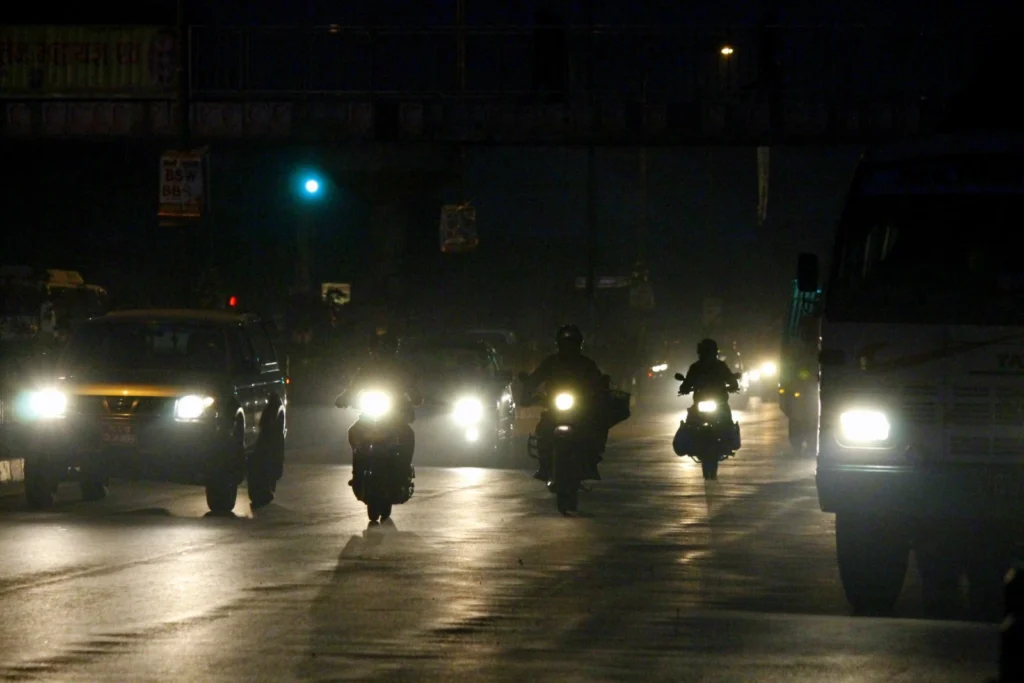Safety : Riding a motorcycle at night offers a unique thrill with quieter roads and cooler air. However, it also presents added risks. Reduced visibility, increased fatigue, and unpredictable hazards make night riding one of the most dangerous times for motorcyclists. Staying safe during night rides requires preparation, focus, and the right strategies.
In this article, we’ll explore practical tips to help you stay visible, alert, and safe while riding after dark. With the right approach, you can enjoy the serenity of night rides without compromising safety.
Table of Contents
- 1. Ensure Your Motorcycle Lights Are Fully Functional
- 2. Safety : Wear High-Visibility and Reflective Gear
- 3. Maintain a Safe Speed and Distance
- 4. Safety : Stay Alert and Avoid Fatigue
- 5. Watch for Road Hazards Unique to Night Riding
- 6. Utilize Technology to Enhance Safety
- 7. Plan Your Route in Advance
- Understanding the Psychology of Night Riding
- Conclusion
1. Ensure Your Motorcycle Lights Are Fully Functional
Why It’s Important:
Your motorcycle’s headlights, taillights, and turn signals are critical for visibility. Poorly functioning or dim lights make it harder for other road users to see you, increasing the risk of accidents.
Tips for Staying Safe:
- Regularly inspect your headlights and taillights to ensure they’re bright and functional.
- Consider upgrading to LED headlights, which provide better illumination and last longer than traditional bulbs.
- Clean your lights frequently, as dirt and debris can reduce their brightness.
Practical Steps:
- Adjust your headlights to ensure they’re properly angled, avoiding blinding oncoming traffic.
- Carry spare bulbs during long trips in case of sudden failures.
- Use your high beams on dark roads, but switch to low beams when vehicles approach.

2. Safety : Wear High-Visibility and Reflective Gear
Why It’s Important:
Dark clothing can make you nearly invisible to drivers at night. High-visibility and reflective gear ensures that other road users can spot you from a distance.
Tips for Staying Safe:
- Invest in jackets, vests, and helmets with reflective panels or bright colors.
- Attach reflective tape to your bike, helmet, and gear for added visibility.
- Avoid wearing all-black gear without reflective features.
Practical Steps:
- Carry a lightweight reflective vest in your luggage for unexpected night rides.
- Use LED strips or lights on your helmet or bike for increased presence on the road.
- Wear gloves with reflective strips to make hand signals more visible.

3. Maintain a Safe Speed and Distance
Why It’s Important:
At night, depth perception and reaction times decrease, making it harder to judge distances or spot hazards. Riding too fast or tailgating can lead to collisions, especially if visibility is poor.
Tips for Staying Safe:
- Reduce your speed to allow more time to react to obstacles or sudden stops.
- Maintain a safe following distance from vehicles ahead, giving yourself room to brake.
- Avoid overtaking unless you’re absolutely sure it’s safe.
Practical Steps:
- Use the “two-second rule” to maintain adequate space between you and the vehicle ahead.
- Be extra cautious on winding roads or in areas with wildlife crossings.
- Ride closer to the center of the lane to avoid hazards like potholes or debris.
4. Safety : Stay Alert and Avoid Fatigue
Why It’s Important:
Fatigue can impair your focus and slow your reactions, increasing the likelihood of mistakes. Riding at night often means battling drowsiness, especially on long journeys.
Tips for Staying Safe:
- Take regular breaks during long rides to rest and rehydrate.
- Avoid riding after a long day when your energy levels are low.
- Recognize signs of fatigue, such as difficulty focusing or frequent yawning, and pull over when necessary.
Practical Steps:
- Plan your route with stops at well-lit, safe locations for rest.
- Drink water or caffeinated beverages in moderation to stay alert.
- Use helmet communication systems to listen to music or podcasts that help keep you engaged.

5. Watch for Road Hazards Unique to Night Riding
Why It’s Important:
At night, hazards such as unlit roadwork, potholes, and wildlife are harder to detect. Drivers are also more likely to be tired or impaired, making the roads less predictable.
Tips for Staying Safe:
- Use your headlights to scan for obstacles and avoid riding too close to the shoulder.
- Be cautious in rural areas where animals may cross unexpectedly.
- Stay alert for impaired drivers, especially near bars or entertainment districts.
Practical Steps:
- Slow down when approaching intersections or unfamiliar roads.
- Use peripheral vision to detect movement on the sides of the road.
- Avoid riding in extreme weather conditions, which can compound the dangers of night riding.

6. Utilize Technology to Enhance Safety
Why It’s Important:
Modern technology offers tools that can greatly improve safety during night rides. From advanced lighting systems to GPS navigation, these tools help riders stay visible and navigate safely.
Tips for Staying Safe:
- Equip your motorcycle with auxiliary lights for extra illumination on dark roads.
- Use GPS devices with night mode for easy navigation without causing glare.
- Wear helmets with built-in communication systems to stay connected in case of emergencies.
Practical Steps:
- Invest in adaptive headlights that adjust to the direction of your turns.
- Keep your phone charged and carry a power bank for emergencies.
- Use apps to monitor weather and traffic conditions before setting out.
7. Plan Your Route in Advance
Why It’s Important:
Unfamiliar roads can pose unexpected challenges at night, such as sharp turns, road closures, or poorly lit stretches. Planning your route ensures you avoid high-risk areas and know what to expect.
Tips for Staying Safe:
- Choose routes with good lighting and minimal traffic whenever possible.
- Avoid shortcuts through poorly maintained or unlit roads.
- Inform someone of your route and expected arrival time, especially for longer trips.
Practical Steps:
- Use navigation apps to find the safest and most reliable routes.
- Identify rest stops or gas stations along the way for breaks.
- Keep a physical map as a backup in case of GPS failure.
Understanding the Psychology of Night Riding
Night riding demands not only physical preparation but also mental readiness. The reduced visibility, quieter roads, and increased risk of encountering fatigued or impaired drivers create an environment that requires heightened concentration. Your mindset plays a significant role in how you navigate these challenges. Riders must approach night rides with a calm and focused mentality, avoiding overconfidence that can lead to misjudgments. It’s crucial to acknowledge the risks involved and adjust your riding style accordingly.
Mental fatigue is another psychological aspect often overlooked during night rides. Long hours of riding can lead to reduced alertness, slower reaction times, and impaired decision-making. To combat this, take regular breaks, even if you feel capable of continuing. Simple actions like stretching, hydrating, or walking around during stops can rejuvenate your focus. Finally, trust your instincts—if the ride feels unsafe or your energy wanes, it’s better to stop for the night. A well-rested and mentally sharp rider is far less likely to encounter trouble on the road. Prioritizing your mental readiness not only enhances safety but also ensures a more enjoyable and stress-free ride.
Conclusion
Night riding can be a thrilling experience, offering a different perspective on the road. However, it also comes with unique challenges that demand heightened attention to safety. By ensuring your motorcycle is well-equipped, wearing high-visibility gear, maintaining a safe pace, and staying alert, you can reduce risks and enjoy the ride.
Remember, the key to safe night riding lies in preparation and awareness. Plan ahead, use the right tools, and always prioritize visibility and focus. Share these tips with fellow riders to promote safer night journeys for everyone.
check more safety topics here